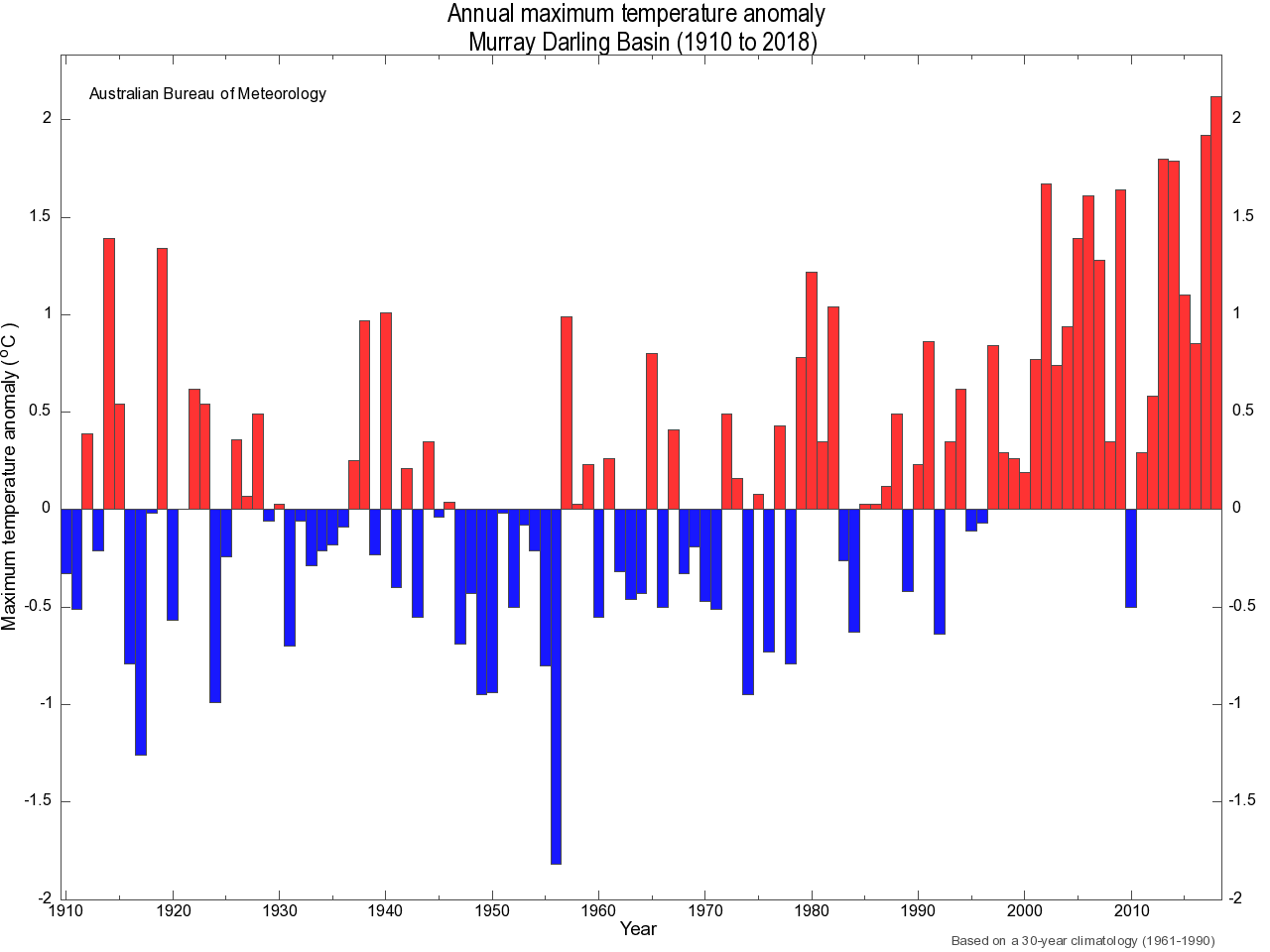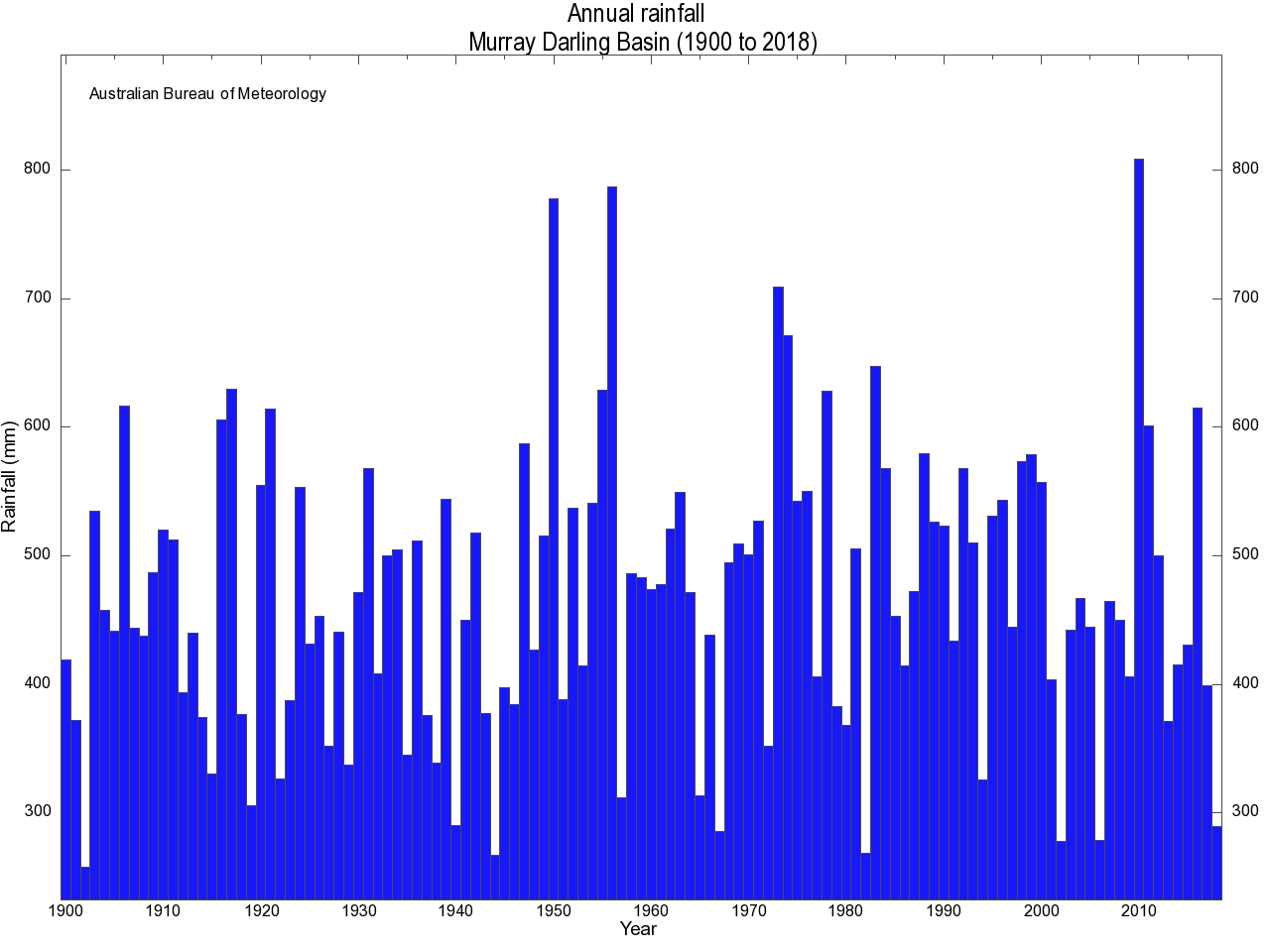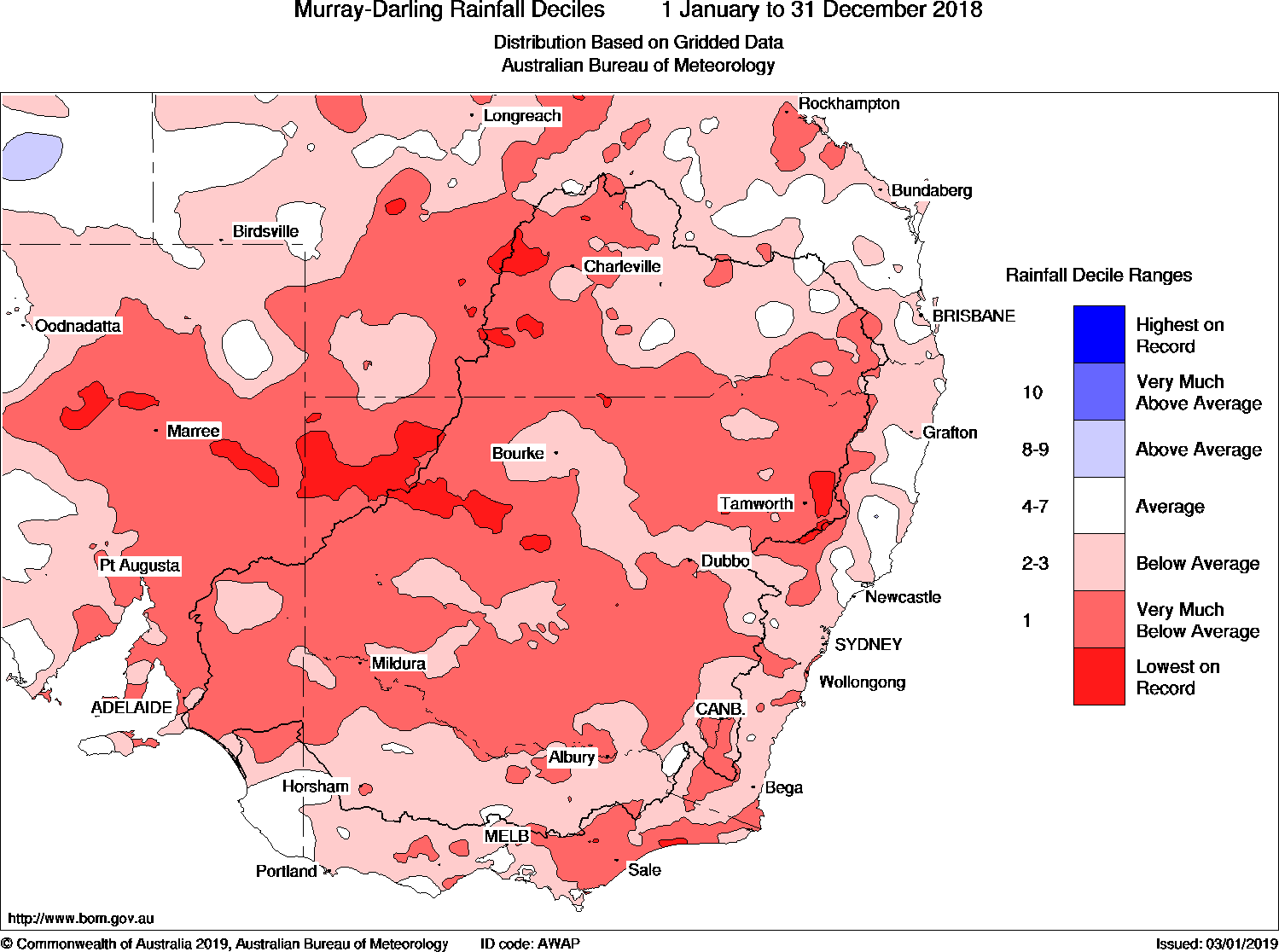Exceptionally hot, dry year for the Murray Darling Basin

The Murray Darling Basin just experienced its hottest and one of its driest years on record.
Like much of Australia, the Murray Darling Basin - which is often referred to as the nation's food bowl - experienced remarkably dry and hot weather during 2018.
According to preliminary data published by the Bureau of Meteorology, the annual maximum temperature for the Murray Darling Basin as a whole was more than two degrees above average during 2018. This anomaly is based on a comparison with the average maximum temperature during the 30 year period from 1961 to 1990.

Image: Annual maximum temperature anomalies for the Murray Darling Basin. Source - BoM
Last year's record maximum temperature beats the Basin's previous record from 2017 and the the next two warmest years, which were 2013 and 2014 respectively.
Rainfall averaged across the Basin made 2018 one of its driest years on record, coming in as the 7th driest out of the last 118 years, according to preliminary data.

Image: Annual total rainfall for the Murray Darling Basin. Source - BoM
Last year's near-record low rainfall and unprecedented daytime heat, which enhanced evaporation, lead to one of the worst droughts on record across large swathes of the Murray Darling Basin.

Image: Rainfall deciles during 2018 for the Murray Darling Basin. Source - BoM
This drought has taken a toll on a number of industries that survive of the water than flows through the rivers and streams across the Murray Darling Basin.
A recent manifestations of the drought has been a spate of mass fish kills in far western NSW, which are thought to have been associated with algal blooms caused by the waning water supplies in the lower Darling.
Despite some rain returning to parts of the Murray Darling Basin during the last three months of 2018, it did little to erode the long-term rainfall deficits that have built up. Drought is a prolonged period of below average rainfall that takes repetitive bouts of decent rainfall to recover from.